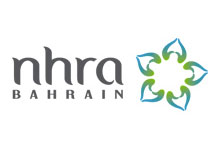
Table of Contents
The National Health Regulatory Authority (NHRA), Bahrain’s agency in the sphere of medical devices, has published a guidance document describing the approach to be followed in the context of the regulatory changes in Europe.
In particular, the document clarifies the transition from the Directives to Regulations (namely, Medical Device Regulation, MDR).
The document is intended to assist medical device manufacturers and other parties involved in ensuring compliance with the existing legal framework.
The authority also reserves the right to change the guidance and recommendations provided therein, should such changes be reasonably necessary to reflect corresponding amendments to the underlying legislation.
Regulatory Background
First, the authority mentions that Europe is undergoing a significant regulatory transition from the Medical Devices Directive (MDD) to the Medical Device Regulation (MDR). Despite an increase in the designation of notified bodies in line with Regulation (EU) 2017/745 (MDR), a substantial gap in their overall capacity still exists.
This situation has the potential to affect the timely conformity assessment of a wide range of devices previously certified under the MDD and Active Implantable Medical Devices Directive (AIMDD) as the timeframe of the transitional period is about to expire.
This document provides a roadmap, offering strategic solutions to various scenarios stakeholders may encounter during this transition.
It is also important to mention that the upcoming requirements will replace only the verification of the CE certificate – the authority explicitly confirms that the necessity to attach the expired CE certificate with other stipulated guidelines in applications remains valid.

Transition Cases and Required Documentation
To assist the parties involved with interpreting the applicable regulatory requirements and following the rules therein, the document provides a few sample cases illustrating the approach to be applied.
However, it is essential to mention that the cases provided are non-exhaustive, and the actual approach should be determined on a case-by-case basis.
Case 1: Importation Pre-MDD Certificate Expiry
For devices manufactured before the expiration of the MDD Quality Assurance Certificate and intended for importation, two specific documents are essential to substitute for the CE certificate verification:
- A formal declaration from the Legal Manufacturer affirming the pre-expiration production of the product.
- A notification from the designated Notified Body detailing the Legal Manufacturer’s shift to MDR, linking the device through the scope, previous certification, or a distinct designation.
In the new guidance revision, NHRA decided to remove Case 2 as it is no longer relevant.
Case 3: Post-CE Expiry Production with Eligible Certificate Extension
Regulation (EU) 2023/607 introduces a new provision for devices produced after the CE certificate’s expiration but are deemed eligible for extension. Manufacturers have two possible pathways based on compliance with certain conditions:
First Route: Written Agreement with a Notified Body. Suppose a legal agreement exists between the manufacturer and a notified body as specified in Section 4.3 of Annex 7 of the MDR.
In that case, the applicant is expected to provide the agreement together with the confirmation letter from the Notified Body confirming the Legal Manufacturer’s compliance with the respective regulatory requirements it is subject to.
Alternatively, a Manufacturer’s Declaration of Certificate Validity may be provided instead of the agreement.
Second Route: Derogation by Competent Authority. As explained in the guidance, in instances where a Member State’s competent authority has issued a derogation, the required documentation includes:
- The official derogation letter together with the evidence of its authenticity.
- A valid SFDA MDMA certificate covering the product.
Should an MDMA certificate not be available, a confirmation letter from the Notified Body verifying the Legal Manufacturer’s compliance with the necessary regulatory requirements (together with its verification) should be acceptable.
Additional Documentation for Notified Body Transfer
As explained in the guidance, the NHRA may necessitate further documents under certain circumstances, particularly when a manufacturer opts to switch to a different Notified Body for MDR certification.
In such cases, the applicant must provide a three-party transfer agreement signed by the manufacturer, the incoming Notified Body, and the outgoing Notified Body. Alternatively, documentation deemed equivalent per the latest EU regulatory amendments and recommendations is required.
Conclusion
By the present guidance, NHRA intends to explain that the transition from MDD to MDR presents a complex landscape for manufacturers, importers, and other stakeholders within the European medical device market.
The guidelines are intended to streamline the process, ensuring compliance with the relevant regulatory requirements.
How Can RegDesk Help?
RegDesk is a holistic Regulatory Information Management System that provides medical device and pharma companies with regulatory intelligence for over 120 markets worldwide. It can help you prepare and publish global applications, manage standards, run change assessments, and obtain real-time alerts on regulatory changes through a centralized platform. Our clients also have access to our network of over 4000 compliance experts worldwide to obtain verification on critical questions. Global expansion has never been this simple.
Want to know more about our solutions? Speak to a RegDesk Expert today!
–>
- SEO Powered Content & PR Distribution. Get Amplified Today.
- PlatoData.Network Vertical Generative Ai. Empower Yourself. Access Here.
- PlatoAiStream. Web3 Intelligence. Knowledge Amplified. Access Here.
- PlatoESG. Carbon, CleanTech, Energy, Environment, Solar, Waste Management. Access Here.
- PlatoHealth. Biotech and Clinical Trials Intelligence. Access Here.
- Source: https://www.regdesk.co/nhra-mdr-transition-guideline-overview/



